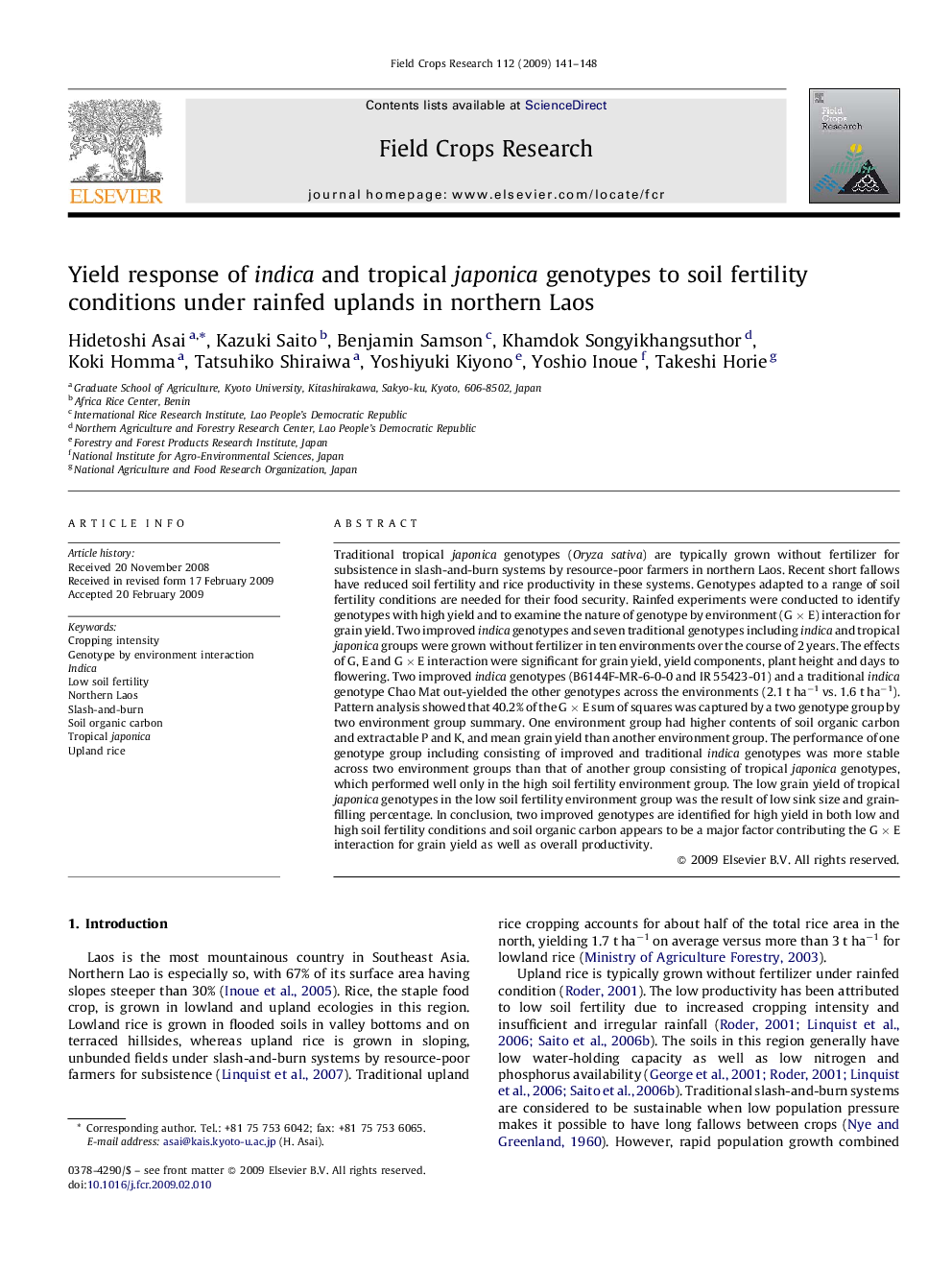| کد مقاله | کد نشریه | سال انتشار | مقاله انگلیسی | نسخه تمام متن |
|---|---|---|---|---|
| 4511244 | 1624743 | 2009 | 8 صفحه PDF | دانلود رایگان |
عنوان انگلیسی مقاله ISI
Yield response of indica and tropical japonica genotypes to soil fertility conditions under rainfed uplands in northern Laos
دانلود مقاله + سفارش ترجمه
دانلود مقاله ISI انگلیسی
رایگان برای ایرانیان
کلمات کلیدی
موضوعات مرتبط
علوم زیستی و بیوفناوری
علوم کشاورزی و بیولوژیک
علوم زراعت و اصلاح نباتات
پیش نمایش صفحه اول مقاله

چکیده انگلیسی
Traditional tropical japonica genotypes (Oryza sativa) are typically grown without fertilizer for subsistence in slash-and-burn systems by resource-poor farmers in northern Laos. Recent short fallows have reduced soil fertility and rice productivity in these systems. Genotypes adapted to a range of soil fertility conditions are needed for their food security. Rainfed experiments were conducted to identify genotypes with high yield and to examine the nature of genotype by environment (G Ã E) interaction for grain yield. Two improved indica genotypes and seven traditional genotypes including indica and tropical japonica groups were grown without fertilizer in ten environments over the course of 2 years. The effects of G, E and G Ã E interaction were significant for grain yield, yield components, plant height and days to flowering. Two improved indica genotypes (B6144F-MR-6-0-0 and IR 55423-01) and a traditional indica genotype Chao Mat out-yielded the other genotypes across the environments (2.1 t haâ1 vs. 1.6 t haâ1). Pattern analysis showed that 40.2% of the G Ã E sum of squares was captured by a two genotype group by two environment group summary. One environment group had higher contents of soil organic carbon and extractable P and K, and mean grain yield than another environment group. The performance of one genotype group including consisting of improved and traditional indica genotypes was more stable across two environment groups than that of another group consisting of tropical japonica genotypes, which performed well only in the high soil fertility environment group. The low grain yield of tropical japonica genotypes in the low soil fertility environment group was the result of low sink size and grain-filling percentage. In conclusion, two improved genotypes are identified for high yield in both low and high soil fertility conditions and soil organic carbon appears to be a major factor contributing the G Ã E interaction for grain yield as well as overall productivity.
ناشر
Database: Elsevier - ScienceDirect (ساینس دایرکت)
Journal: Field Crops Research - Volume 112, Issues 2â3, 26 June 2009, Pages 141-148
Journal: Field Crops Research - Volume 112, Issues 2â3, 26 June 2009, Pages 141-148
نویسندگان
Hidetoshi Asai, Kazuki Saito, Benjamin Samson, Khamdok Songyikhangsuthor, Koki Homma, Tatsuhiko Shiraiwa, Yoshiyuki Kiyono, Yoshio Inoue, Takeshi Horie,